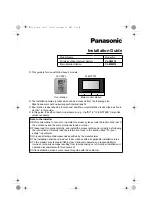
Rockwell
Automation
1606-XLE240EP 24V, 10A; Single Phase Input
10000126343
(Version 00)
www.ab.com
Page 16
25.3.
B
ACK
-
FEEDING
L
OADS
Loads such as decelerating motors and inductors can feed voltage back to the power supply. This feature is also called return voltage immunity or
resistance against Back- E.M.F. (Electro Magnetic Force).
This power supply is resistant and does not show malfunctioning when a load feeds back voltage to the power supply. It does not matter, whether the
power supply is on or off.
The maximum allowed feed back voltage is 35Vdc. The absorbing energy can be calculated according to the built-in large sized output capacitor which
is specified in chapter 8.
25.4.
O
UTPUT
C
IRCUIT
B
REAKERS
Standard miniature circuit breakers (MCBs) can be used for branch protection. Ensure that the MCB is rated for DC voltage, too. The following tests
show which circuit breakers the power supply typically trips.
Circuit breakers have huge tolerances in their tripping behavior. Therefore, these typical tests can only be used as a recommendation or for comparing
two different power supplies. Furthermore, the loop impedance has a major influence on whether a breaker trips or not. Two tests were performed,
representing typical situations:
Test 1: Short circuit with S1 on the power supply end of the cable (loop impedance approx. 20mOhm)
Fig.
25-3 Branch protectors, test circuit 1
Circuit
Breaker
Power
Supply
AC
DC
+
-
I
Load
+
-
S1
Parameters:
Input voltage:
230Vac, load current: 0A
The following circuit breaker tripped during the test:
A- or Z- Characteristic::
equal or smaller 25A
B- Characteristic: equal or smaller 16A
C- Characteristic: equal or smaller 13A
Test 2: Short circuit with S1 on the load end (additional impedance included; represents longer load wire length).
Fig. 25-4 Branch protectors, test circuit 2
R
Circuit
Breaker
Power
Supply
AC
DC
+
-
I
S1
Load
+
-
Parameters:
Input voltage:
230Vac, load current: 0A
The following circuit breaker tripped during the test:
A- or Z- Characteristic::
≤
16A and R= 82mOhm
B- Characteristic:
≤
6A and R= 180mOhm
C- Characteristic:
≤
4A and R= 220mOhm
What does this resistance mean in wire length?
0.5mm
2
0.7mm
2
1.0mm
2
1.5mm
2
2.5mm
2
4.0mm
2
82mOhm
2.3m 3.2m 4.6m 6.9m 11.4m 18.3m
180mOhm
5.0m 7.0m 10.0m 15.0m 25.1m 40.1m
220mOhm
6.1m 8.6m 12.3m 18.4m 30.6m 49.0m
Example:
Which wire gauge must be used to trip a B-Characteristic circuit breaker with a rating of 6A? The load wire length is 21m.
Answer: A 6A B-Characteristic circuit breaker requires a loop impedance of less than 180mOhm (test results). The wire length table shows that up to
25.1m wire with a cross section of 2.5mm
2
are below 180mOhm. A wire not smaller than 2.5mm
2
shall be used.




































